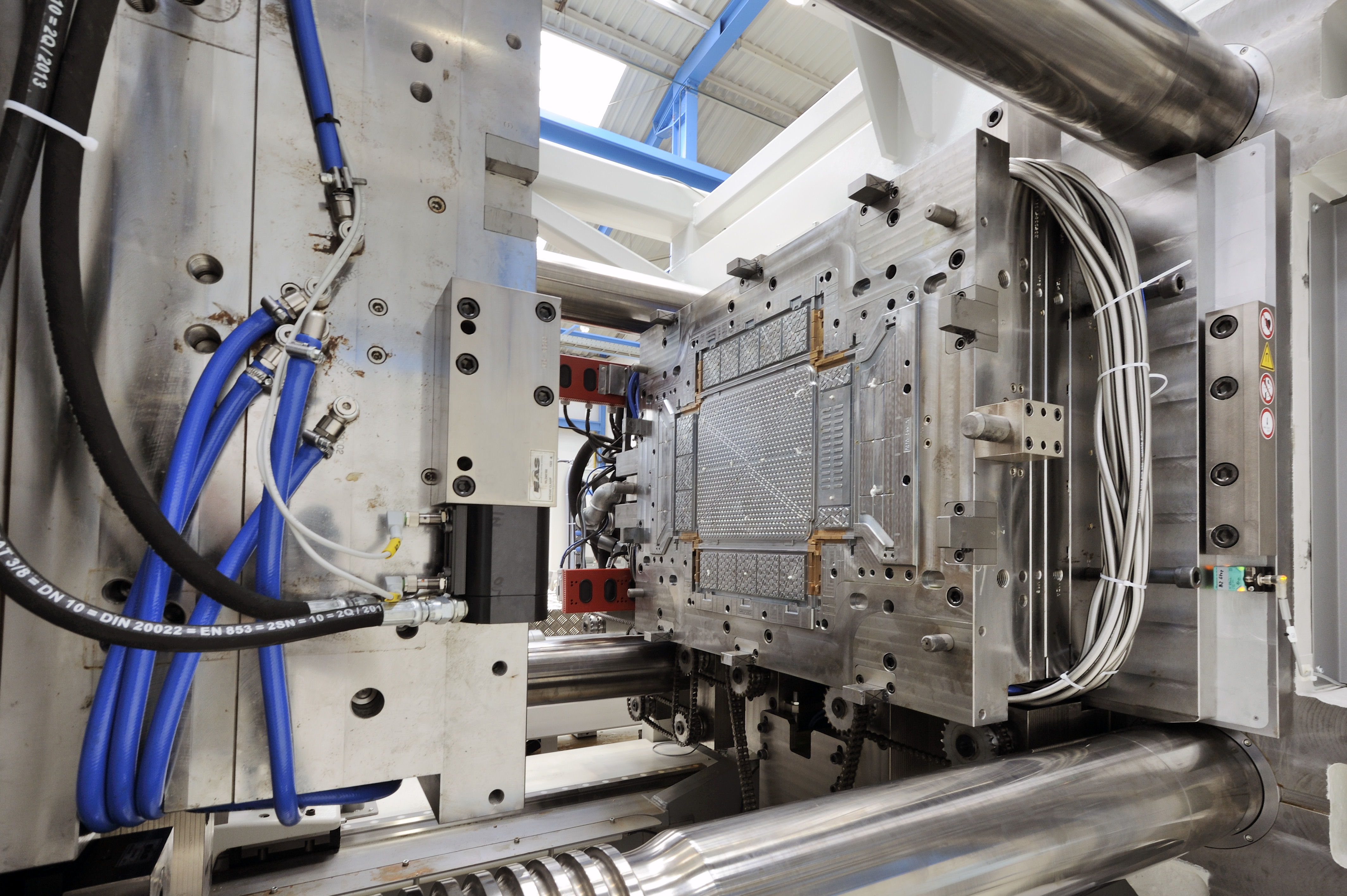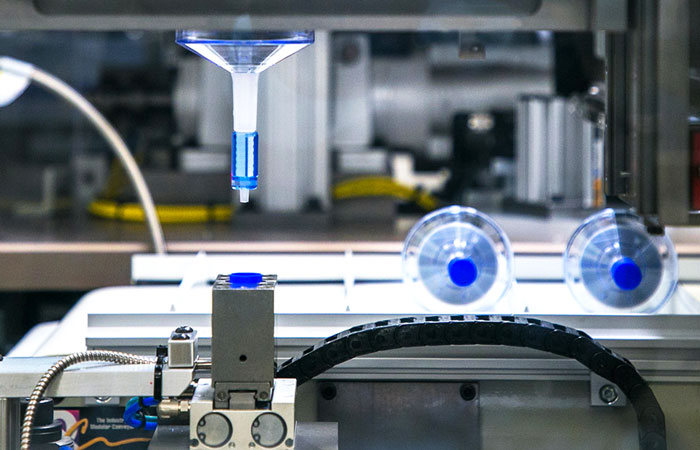Recognizing the Fundamentals of Plastic Shot Molding Processes
Plastic injection molding works as a foundation of contemporary production, providing a systematic strategy to producing complicated parts with accuracy. This process not only includes the basic actions of melting and injecting materials right into mold and mildews yet additionally entails a nuanced understanding of various influencing factors, such as temperature and stress. As sectors increasingly require performance and top quality, the ins and outs of this approach become extra crucial. Exploring these crucial aspects can disclose exactly how even minor adjustments can bring about considerable enhancements in manufacturing end results, questioning concerning the possibility for advancement in this recognized procedure.
What Is Plastic Injection Molding?
Plastic shot molding is a commonly used production procedure that transforms thermoplastic and thermosetting products into specific and complex shapes. This strategy is favored for its ability to generate high quantities of similar parts with extraordinary accuracy, making it an important approach in various industries, including auto, consumer products, and clinical gadgets.
The procedure involves melting the picked plastic product and injecting it right into a mold and mildew under high stress. The mold, made to the specifications of the wanted component, allows the liquified plastic to materialize as it cools down and strengthens. Once the material has actually set, the mold and mildew is opened, and the completed element is expelled.
Plastic shot molding offers numerous benefits, including reduced waste, consistency in production, and the capability to integrate elaborate styles that may be challenging with various other manufacturing techniques. Additionally, it sustains a broad variety of products, each supplying unique buildings that can be tailored for certain applications. As markets remain to introduce, plastic shot molding remains at the center, enabling the development of innovative products that fulfill advancing customer needs.
The Injection Molding Refine
The shot molding process is an advanced method that involves several key stages to produce top quality plastic components. Plastic pellets are fed into a warmed barrel where they are thawed into a viscous fluid. This molten plastic is after that infused under high pressure right into a precision-engineered mold and mildew, which shapes the material right into the preferred kind.
Once the mold is filled, the plastic is allowed to cool down and strengthen, taking the form of the mold cavity. Air conditioning time is vital, as it influences the cycle time and the final buildings of the molded component. After adequate cooling, the mold and mildew opens, and the finished part is ejected using ejector pins.

Products Used in Injection Molding
Different materials can be used in the injection molding process, each offering special properties that deal with certain applications. One of the most generally made use of products consist of thermoplastics, thermosetting plastics, and elastomers.

Thermosetting plastics, like epoxy and phenolic resins, go through a chemical adjustment throughout the healing procedure, resulting in a rigid, stringent framework. These materials are ideal for applications calling for high warmth resistance and architectural integrity, usually used in auto components and electrical insulators.
Elastomers, including silicone and rubber-based products, give flexibility and durability. Their unique properties make them suitable for applications that demand elasticity, such as gaskets and seals.
Furthermore, specialized products like bio-based plastics and compounds are obtaining grip for their ecological benefits and enhanced efficiency features, broadening the range of shot molding applications in numerous sectors. Understanding the residential properties of these materials is critical for selecting the appropriate type for particular tasks.
Benefits of Shot Molding
Shot molding stands out as a highly effective manufacturing process that supplies various benefits for producing complex get rid of precision. One of one of the most considerable benefits is the ability to create intricate layouts that would be impossible or challenging to attain with other techniques (Plastic Injection Molding). The process permits for detailed attributes and tight tolerances, ensuring premium components
Additionally, injection molding is known for its rapid manufacturing abilities, making it an optimal option for high-volume manufacturing. Once the mold and mildew is created, components can be generated quickly, lowering lead times and increasing general productivity. This performance not only decreases production costs yet likewise gives an affordable side on the market.
The versatility of products used in shot molding even more boosts its charm. A wide array of thermoplastics and this post thermosetting polymers can be utilized, permitting makers to select products that best satisfy their specific demands, including toughness, warm, and versatility resistance.
Additionally, the procedure reduces waste, as excess product can often be recycled and reused. This sustainability facet adds to a minimized ecological impact, making injection molding a liable manufacturing choice. In general, the benefits of shot molding make it a recommended method for numerous markets.
Variables Affecting Product High Quality
While numerous factors can influence product quality in injection molding, understanding these aspects is vital for attaining ideal outcomes. Trick facets consist of material choice, processing specifications, and mold and mildew layout.
Product option plays a vital duty, as various polymers exhibit unique homes that impact flowability, strength, and thermal stability. Insufficient material choice can lead to problems such as warping or incomplete dental filling.
Handling criteria, including temperature, pressure, and cycle time, must get redirected here be carefully controlled. Variants in these setups can lead to inconsistencies partially measurements and surface coating. Excessively high temperatures might trigger degradation of the polymer, while inadequate stress can result in brief shots.
Mold layout is similarly essential, as it determines the circulation of the molten plastic and the cooling process. Badly made molds might cause unequal air conditioning rates, resulting in dimensional errors and residual stress and anxieties.

Verdict
In final thought, plastic injection molding acts as a vital manufacturing procedure that allows the efficient manufacturing of high-grade parts. Proficiency of the injection molding procedure, consisting of the understanding of materials and the impact of different aspects on product quality, is important for accomplishing ideal results. The advantages of this approach, such as cost-effectiveness and layout adaptability, additional highlight its importance throughout multiple sectors, strengthening its status as a recommended choice for high-volume manufacturing.
Plastic injection molding serves as a foundation of modern-day manufacturing, giving a systematic method to creating complicated elements with accuracy.Plastic shot molding offers several benefits, including reduced waste, uniformity in production, and the capacity to integrate intricate layouts that might be testing with other manufacturing approaches (Plastic Injection Molding). As markets continue to innovate, plastic shot molding stays at the center, enabling the advancement i thought about this of innovative products that meet evolving customer demands
The injection molding procedure is an innovative technique that includes several essential phases to create top quality plastic parts.In final thought, plastic shot molding serves as an essential manufacturing process that enables the reliable production of high-grade components.